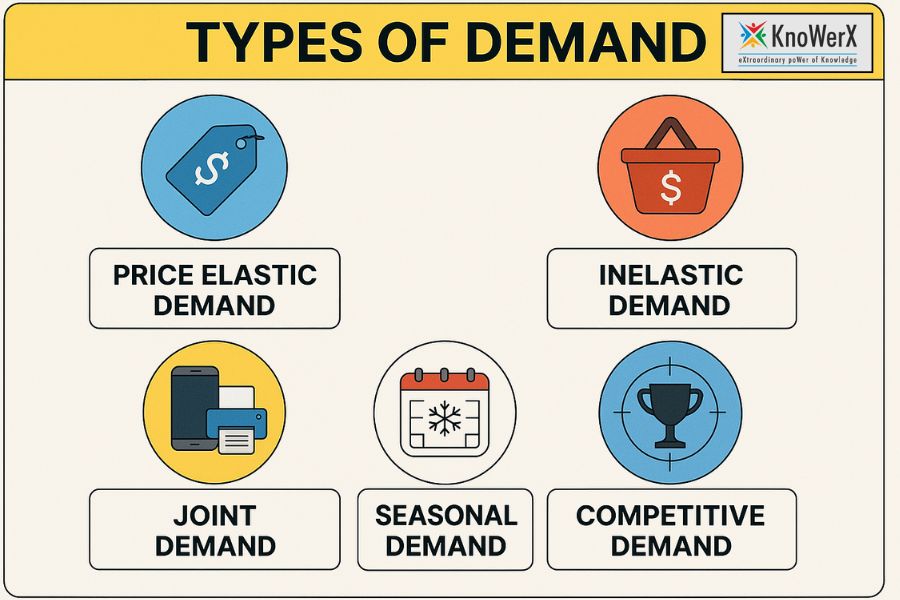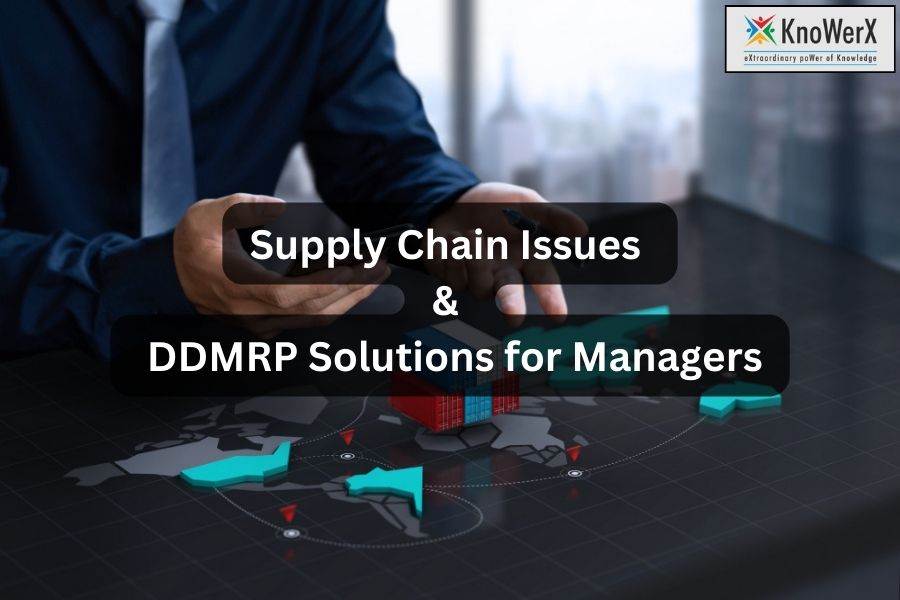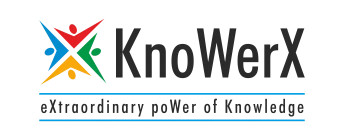Why Supply Chain Transformation is a Must Now

Why Supply Chain Transformation is a Must Now – The Complete Guide Supply chain transformation refers to the comprehensive rethinking and restructuring of supply chain processes, systems, and strategies to better align with the changing demands of the global market. Unlike incremental improvements, transformation entails adopting innovative technologies, reengineering workflows, and reshaping supply chain models to drive long-term resilience and performance. Since 2020, businesses have faced significant disruptions that exposed the vulnerabilities of traditional supply chain models. From the COVID-19 pandemic to geopolitical tensions and inflationary pressures, these global shocks have underscored the urgent need for businesses to future-proof their supply chains. In this complete guide, we explore the key reasons driving the transformation, core components of a modern supply chain, step-by-step processes to begin your transformation journey, the challenges involved, real-life case studies, and future trends that will redefine supply chain success. The Need for Urgency: What’s Changed in Supply Chains Impact of Global Disruptions: The COVID-19 pandemic brought supply chains to a standstill, causing delays, stockouts, and cost escalations. The Russia-Ukraine war and trade tensions have further strained global networks. These events have demonstrated that supply chains can no longer be reactive; they must be proactive, responsive, and resilient. Rising Customer Expectations: Today’s consumers expect real-time visibility, faster delivery, and seamless omni-channel experiences. Supply chains must adapt to meet these expectations, ensuring flexibility and transparency across the entire delivery journey. Regulatory and Sustainability Demands: Governments and regulatory bodies are enforcing stricter environmental, social, and governance (ESG) standards. From carbon emissions reporting to ethical sourcing requirements, organisations must transform their supply chains to comply with new regulations. Digital Disruption: The acceleration of technology is reshaping how supply chains operate. Companies must embrace digital tools to remain competitive, from cloud computing and big data to machine learning and robotic process automation (RPA). Key Drivers of Supply Chain Transformation Demand Volatility and Inventory Visibility: Consumer demand patterns have become unpredictable. Accurate forecasting and inventory visibility are vital for managing stock levels, minimising waste, and ensuring timely fulfilment. ESG and Sustainability Goals: Organisations are now being held accountable for their environmental impact. Green logistics, waste reduction, and circular supply chain models are no longer optional – they are imperative. Shift from Globalisation to Regionalisation: Companies are reducing dependence on global suppliers and moving toward regionalised networks to improve supply continuity and reduce risks from geopolitical issues. Data and Analytics as a Differentiator: Harnessing data enables businesses to identify inefficiencies, predict disruptions, and make data-driven decisions. Predictive analytics and real-time insights offer a significant competitive edge. Labour Shortages and Skills Gap: The shortage of skilled labour is a growing concern. Businesses must invest in upskilling employees and automating repetitive tasks to maintain operational efficiency. Core Pillars of a Transformed Supply Chain Digitalisation & Automation AI, IoT, Blockchain, and Robotics: Artificial Intelligence (AI) is used for forecasting, automation, and anomaly detection. Internet of Things (IoT) devices enable real-time tracking of goods. Blockchain ensures transparent and tamper-proof record-keeping, while robotics streamline warehouse operations and last-mile delivery. Resilience & Agility Scenario Planning, Dual Sourcing, Buffer Stock: Building resilience involves planning for multiple scenarios, diversifying suppliers, and maintaining safety stock. Agility ensures businesses can quickly pivot in response to changes in demand or disruptions. Customer-Centric Supply Chain Last-Mile Delivery, Personalisation, Omni-Channel Fulfilment: A modern supply chain is designed around the customer. This includes enabling faster last-mile delivery, offering personalised products and services, and integrating online and offline fulfilment channels. Data-Driven Decision Making Advanced Analytics, Real-Time Dashboards: Real-time data visualisation dashboards and predictive analytics help companies anticipate issues, optimise routes, manage inventory, and improve performance across the board. Sustainability Integration Green Logistics, Circular Economy, Carbon Reduction: Sustainability is embedded into every layer of a modern supply chain. Companies are adopting electric delivery vehicles, recycling packaging materials, and aiming for net-zero emissions. Steps to Begin Supply Chain Transformation Assessment & Benchmarking: Begin with a detailed assessment of your existing supply chain. Benchmark performance against industry standards to identify gaps and opportunities for improvement. Define Vision and Strategic Objectives: Establish a clear vision for transformation. Align objectives with broader business goals, including efficiency, customer satisfaction, risk mitigation, and sustainability. Invest in the Right Technology: Choose technologies that align with your strategy. Cloud platforms, ERP systems, AI tools, and automation technologies should be scalable and compatible with your existing infrastructure. Change Management & Talent Upskilling: Transformation is as much about people as it is about technology. Implement change management strategies and train your workforce to adopt new tools and workflows. Pilot Programs and Phased Implementation: Test new solutions through pilot projects. Use lessons learned to refine your approach and scale in phases to minimise disruption and maximise ROI. Challenges to Expect – And How to Overcome Them Resistance to Change: Employees may resist new technologies or fear job displacement. Clear communication, involvement in planning, and training can ease transitions. Integration Issues: Legacy systems can hinder integration. A strong IT strategy, middleware solutions, and API-driven architecture can enable seamless connectivity. Budget Constraints: Transformation requires investment. Prioritise initiatives with quick wins and high ROI to secure buy-in and justify further funding. Data Quality and Cybersecurity: Poor data quality leads to poor decisions. Implement data governance policies and cybersecurity protocols to safeguard operations. Stakeholder Alignment: Ensuring alignment across departments can be challenging. Regular updates, workshops, and cross-functional teams foster collaboration and alignment. Case Studies: Success Stories in Supply Chain Transformation Example 1: Walmart Walmart implemented predictive analytics and IoT technologies to enhance inventory management and customer experience. Their investments have resulted in increased stock availability and reduced waste. Example 2: Unilever Unilever embraced a sustainable supply chain by reducing emissions and increasing supply chain transparency. They leveraged blockchain to track materials from source to shelf. Example 3: DHL DHL integrated robotics and AI in their warehouses to optimise logistics and improve delivery speed. Their innovation hubs promote continuous improvement and tech adoption. The Role of Leadership in Driving Change CEO and CSCO Alignment: Leadership must be united in their commitment to transformation. The
How to Dominate Logistics and Distribution in 2025

How to Dominate Logistics and Distribution in 2025 The landscape of Logistics and Distribution is rapidly evolving. With technological advancements, changing consumer expectations, and global uncertainties, businesses in 2025 need to be more agile, efficient, and intelligent than ever before. To succeed, professionals must focus on a strategic mix of innovation, workforce development, and customer-centric operations. In this article, we explore the key pillars to help you dominate Logistics and Distribution in 2025. Embrace Tech-Driven Transformation Leverage Artificial Intelligence and Machine Learning Artificial Intelligence and Machine Learning have become essential tools in the realm of Logistics and Distribution. These technologies enable businesses to make smarter decisions by analysing large volumes of data. Predictive analytics, powered by machine learning, can forecast demand more accurately, reduce errors, and improve inventory planning. In transportation, AI algorithms can optimise delivery routes, saving time and reducing fuel costs. Implement Internet of Things for Real-Time Visibility The Internet of Things connects physical devices, allowing for seamless communication and data exchange across the supply chain. In Logistics and Distribution, IoT enables real-time tracking of shipments, improving transparency and customer satisfaction. It also facilitates condition monitoring for temperature-sensitive goods, ensuring compliance with safety and quality standards. Companies that invest in IoT infrastructure are better positioned to react swiftly to disruptions and delays. Adopt Blockchain for Security and Transparency Blockchain technology introduces a secure, tamper-proof method of recording transactions and tracking assets. In Logistics and Distribution, blockchain ensures authenticity and accountability across the entire supply chain. It allows all parties to view a single version of the truth, which is crucial for traceability and fraud prevention. By adopting blockchain, companies can foster trust and collaboration with partners and clients. Optimise Warehouse and Fulfilment Operations Invest in Robotics and Automation Automation is transforming warehouse operations across the globe. The use of robotics for picking, packing, and sorting reduces manual labour and human error. Automated systems can operate round-the-clock, increasing throughput and reducing operational costs. In Logistics and Distribution, automation enhances efficiency, improves accuracy, and accelerates order fulfilment. Develop Flexible Warehouse Networks The traditional model of large central warehouses is being replaced by decentralised networks. Micro-fulfilment centres located closer to urban populations enable faster delivery and reduced transportation costs. These flexible networks are especially beneficial for e-commerce businesses. They allow companies to respond quickly to demand fluctuations and minimise last-mile delivery challenges. Use Data-Driven Inventory Management Data analytics is a critical component of modern inventory management. Companies that utilise real-time data can make informed decisions about stock levels, replenishment timing, and product placement. Just-In-Time restocking minimises excess inventory, lowers storage costs, and prevents stockouts. Cloud-based inventory systems provide visibility and control across multiple locations, improving overall operational efficiency in Logistics and Distribution. Build a Resilient and Agile Distribution Network Diversify Carrier and Supplier Relationships Relying on a single supplier or logistics provider can be risky. Diversifying your network of carriers and suppliers ensures continuity in case of disruption. Building relationships with regional and local partners allows for quicker response times and better adaptability. This diversity enhances the robustness of your Logistics and Distribution system. Prepare Effective Contingency Plans Unforeseen events such as natural disasters, pandemics, or political unrest can disrupt supply chains. Having contingency plans in place enables businesses to react quickly and maintain operations. These plans may include rerouting options, emergency inventory reserves, or alternative suppliers. In Logistics and Distribution, preparedness is a competitive advantage. Implement Dynamic Route Planning Advanced route planning tools use data such as weather, traffic conditions, and vehicle availability to determine the most efficient delivery paths. Integrating these tools with GPS and Transport Management Systems ensures timely deliveries and optimal fuel usage. Businesses that use dynamic route planning can reduce delivery times and increase customer satisfaction. Prioritise Customer-Centric Logistics and Distribution Offer Same-Day and Next-Day Delivery Options Today’s consumers demand speed and convenience. Providing same-day or next-day delivery options can set your business apart from competitors. To meet these expectations, companies must invest in local fulfilment centres and efficient delivery networks. Fast delivery enhances customer loyalty and boosts brand reputation in the Logistics and Distribution sector. Provide Transparent Tracking and Communication Customers want to know the status of their orders in real time. Offering tracking features and proactive communication builds trust and reduces customer inquiries. User-friendly dashboards and automated notifications keep customers informed throughout the delivery process. Transparency in Logistics and Distribution strengthens the customer experience. Integrate Sustainable and Ethical Practices Sustainability is no longer optional. Businesses that prioritise environmental responsibility gain favour with customers and stakeholders. Initiatives such as eco-friendly packaging, carbon offset programs, and electric delivery vehicles contribute to a greener Logistics and Distribution model. Ethical sourcing and labour practices also play a crucial role in building a responsible supply chain. Train and Empower Your Workforce Upskill Teams in Digital Tools and Analytics As technology continues to evolve, the need for a digitally skilled workforce becomes more urgent. Providing training in logistics software, data analytics, and emerging technologies equips employees to manage complex operations. Companies that invest in upskilling gain a competitive edge in Logistics and Distribution. Build Cross-Functional Teams Collaboration across departments is key to a cohesive Logistics and Distribution strategy. Cross-functional teams that include logistics, IT, customer service, and procurement professionals can solve problems faster and innovate more effectively. Encouraging collaboration leads to more efficient processes and better outcomes. Promote Leadership in Crisis Management Leaders play a critical role in navigating disruptions. Developing leadership skills in risk assessment, communication, and decision-making prepares teams to handle challenges confidently. Training programs focused on crisis management build resilience within Logistics and Distribution operations. Frequently Asked Questions Ending Notes The future of Logistics and Distribution in 2025 is defined by technology, agility, and customer focus. Businesses must embrace innovation, strengthen their networks, and empower their workforce to stay ahead. At KnoWerX, we specialise in preparing professionals for success through high-quality training and certification programs. With our guidance, you can master the strategies needed to dominate Logistics and Distribution and drive your career or business forward
Risk Analysis and Response: Overrated or Essential?

Risk Analysis and Response: Overrated or Essential? Imagine a multimillion-dollar project halted midway due to an unforeseen regulatory change. The team scrambles, budgets explode, and timelines collapse. The post-mortem reveals one glaring omission: the risk was never analysed, let alone planned for. In a world that’s becoming increasingly complex and uncertain, Risk Analysis and Response is no longer a luxury it may be the linchpin of sustainable decision-making. Yet, some argue it’s an overhyped, resource-draining exercise that rarely delivers on its promises. So, where does the truth lie? Let’s explore whether Risk Analysis and Response is genuinely essential or simply overrated. Understanding Risk Analysis and Response To understand the debate, it’s crucial to define the concept. Risk Analysis and Response refers to a structured approach used in project management and business planning to identify potential threats, assess their impact and likelihood, and implement appropriate strategies to mitigate or respond to them. This process typically involves: Risk Identification: Listing possible risks that might affect objectives. Risk Assessment: Evaluating the probability and impact of these risks. Risk Response Planning: Developing actions to avoid, reduce, transfer, or accept the risk. Monitoring and Control: Continuously tracking and managing risks as projects evolve. Tools like SWOT analysis, risk matrices, Monte Carlo simulations, and scenario planning often play vital roles in executing a successful Risk Analysis and Response strategy. Arguments for Its Essential Nature Improved Decision-Making One of the most compelling arguments in favour of Risk Analysis and Response is its role in enhancing decision-making. When you anticipate potential disruptions, you can prepare contingency plans, allocate resources efficiently, and reduce surprises. For instance, in construction projects, planning for material shortages or labour delays can prevent costly rework and penalties. In IT, risk analysis helps safeguard data and maintain business continuity during cyber-attacks. Minimises Financial Loss A comprehensive Risk Analysis and Response process helps organisations prevent or lessen the impact of risks that could lead to significant financial losses. This is especially critical in sectors like finance, energy, and manufacturing, where minor errors can lead to massive repercussions. A case in point: a global pharmaceutical company avoided a $50 million delay by identifying supply chain vulnerabilities early and rerouting production proactively. Mandatory for Compliance and Governance In many industries, regulatory bodies require evidence of formal risk management practices. Without robust Risk Analysis and Response, companies risk non-compliance, legal issues, and damage to reputation. Frameworks like ISO 31000 and PMBOK place heavy emphasis on risk management as a foundational requirement. Why Some Consider It Overrated Despite its apparent benefits, Risk Analysis and Response is not without criticism. Too Theoretical and Time-Consuming Many argue that traditional risk processes can be overly bureaucratic and consume disproportionate time and resources. Managers often feel like they’re “ticking boxes” rather than generating actionable insights. In fast-moving environments, the static nature of many risk models may also fail to keep pace. Inaccurate Predictions Critics also highlight the limitations of forecasting. Risk assessments rely heavily on assumptions, which are often flawed or based on incomplete information. The COVID-19 pandemic is a prime example a low-likelihood, high-impact event that was largely unaccounted for in most corporate risk plans. Misplaced Focus Sometimes, organisations over-prepare for minor, low-impact risks while overlooking more significant threats. This misplaced focus can drain energy and divert resources from more critical operational needs. Striking a Balance So, is Risk Analysis and Response essential or overrated? The answer may not be binary. The real value lies in how the process is applied. Make It Scalable Risk management doesn’t need to be complex to be effective. Tailoring the depth and breadth of Risk Analysis and Response to match the project size and nature ensures efficiency without sacrificing insight. For example, a startup may adopt a lightweight, agile framework, while a multinational corporation requires a more formal structure. Focus on Strategic Risks Rather than listing every conceivable threat, focus on those that directly affect key business objectives. Strategic alignment ensures that Risk Analysis and Response delivers meaningful input to top-level decisions. Integrate with Agile and Lean Models Modern organisations are increasingly blending risk management into agile methodologies. Risk backlogs, sprint-level risk reviews, and rapid response loops allow Risk Analysis and Response to remain dynamic and actionable. Leverage Technology Today’s digital tools from AI-based forecasting to cloud-based risk dashboards are making Risk Analysis and Response more data-driven and real-time. This transformation allows businesses to adapt to evolving threats without slowing down. Frequently Asked Questions Ending Notes At KnoWerX, we believe that Risk Analysis and Response is not just a theoretical concept it’s a strategic imperative in the world of Supply Chain Management. With global supply chains becoming more interconnected and vulnerable to disruptions, organisations must be proactive rather than reactive. Ignoring potential risks can lead to missed opportunities, financial loss, and operational breakdowns. As an institute dedicated to training professionals in supply chain excellence, KnoWerX equips learners with practical, industry-relevant knowledge on identifying, analysing, and responding to risks effectively. We empower supply chain leaders to build resilient systems, make data-informed decisions, and lead with confidence even in times of uncertainty. So, is Risk Analysis and Response overrated or essential? From a supply chain management perspective and from the lens of KnoWerX it is undeniably essential for building future-ready organisations that can thrive in a dynamic world. Image Reference: Freepik Disclaimer: All trademarks, logos, and brand names are the property of their respective owners. All company, product, and service names used in this website are for identification purposes only. Use of these names, trademarks, and brands does not imply endorsement.
How Global Supply Chain at Risk from Rising Tariffs

How Global Supply Chain at Risk from Rising Tariffs The introduction sets the stage by defining tariff hikes as increases in taxes imposed on imported or exported goods, which directly affect the Global Supply Chain. It highlights the critical role of the Global Supply Chain in enabling the seamless flow of goods, services, and raw materials across borders. Tariff hikes disrupt this interconnected network by raising costs and creating inefficiencies. This section provides a brief overview of how these disruptions ripple through industries, setting up the need to explore their mechanisms and solutions. II. Mechanisms of Disruption This section delves into how tariff hikes destabilize the Global Supply Chain through multiple channels: Increased Costs: Tariff hikes elevate the cost of importing raw materials and exporting finished goods, squeezing profit margins. For example, manufacturers reliant on the Global Supply Chain for components face higher production costs, which may be passed to consumers, affecting competitiveness. Supply Chain Bottlenecks: The Global Supply Chain experiences delays as customs processes become more complex due to tariff-related compliance. These bottlenecks disrupt logistics, causing inventory shortages or overstocking, which further strains the Global Supply Chain. Market Uncertainty: Tariff hikes introduce volatility in the Global Supply Chain by making demand and supply unpredictable. Businesses struggle with forecasting, leading to inefficiencies in production and distribution planning. Trade Relationship Strain: Retaliatory tariffs from trading partners exacerbate disruptions in the Global Supply Chain. This tit-for-tat escalation erodes trust, complicating long-term partnerships and trade agreements essential for a stable Global Supply Chain. III. Case Studies This section illustrates real-world impacts of tariff hikes on the Global Supply Chain through two examples: U.S.-China Trade War (2018-2020): Tariffs imposed during this period disrupted the Global Supply Chain for industries like electronics and agriculture. For instance, higher costs for imported components forced manufacturers to seek alternative suppliers, creating delays and inefficiencies in the Global Supply Chain. Recent Tariff Hikes in [Specific Region/Industry]: This placeholder for a current example (e.g., tariffs on steel in Europe) highlights ongoing challenges. It examines how specific sectors face supply shortages or cost spikes, underscoring the broader vulnerability of the Global Supply Chain to policy shifts. IV. Steps to Mitigate and Fix Disruptions This section outlines actionable solutions to address tariff-related disruptions in the Global Supply Chain: Short-Term Solutions: Businesses can diversify suppliers to reduce reliance on tariff-affected regions, ensuring continuity in the Global Supply Chain. Stockpiling critical inventory and renegotiating contracts to share cost burdens also help mitigate immediate impacts. Long-Term Strategies: Relocating manufacturing to regions with favorable trade policies strengthens the Global Supply Chain’s resilience. Investing in automation reduces dependency on imported goods, while advocating for stable trade agreements minimizes future disruptions. Collaboration and Policy Advocacy: Industry associations can collectively lobby for tariff reductions, supporting a smoother Global Supply Chain. Engaging policymakers ensures businesses’ concerns are addressed. Technology and Innovation: AI-driven analytics enhance visibility in the Global Supply Chain, enabling proactive adjustments. Blockchain ensures transparent trade documentation, reducing delays and costs. V. Economic and Social Impacts This section focuses on the broader consequences of tariff hikes beyond operational disruptions, examining their effects on economies and societies. Economic Consequences: Reduced Competitiveness of Affected Industries: Tariff hikes increase the cost of goods, making products from affected industries (e.g., manufacturing, agriculture) less competitive in global markets. For example, higher tariffs on imported steel can raise production costs for automakers, leading to higher prices and reduced market share. Potential Job Losses Due to Cost Pressures: As companies face squeezed margins from increased costs, they may cut jobs or halt expansion to remain profitable. For instance, small businesses reliant on imported goods may struggle to absorb tariff costs, leading to layoffs or closures. Social Implications: Increased Consumer Prices: Tariffs often result in higher prices for goods, as businesses pass on additional costs to consumers. This can lead to inflation, reducing purchasing power, particularly for low-income households. For example, tariffs on electronics could raise the cost of smartphones and laptops. Strain on Global Economic Equity: Tariff hikes can disproportionately affect developing nations reliant on exports, exacerbating economic inequality. For instance, tariffs on agricultural exports from poorer countries could limit their access to global markets, hindering economic growth. This section highlights the ripple effects of tariffs on economic stability and societal well-being, emphasizing the need for mitigation strategies. VI. Future Outlook and Preparedness This section explores the evolving landscape of global trade and how businesses and policymakers can prepare for ongoing and future tariff-related challenges. Emerging Trade Trends: Shift Towards Regional Trade Agreements: In response to tariff uncertainties, countries are increasingly forming regional trade blocs (e.g., RCEP, USMCA) to reduce reliance on global supply chains and stabilize trade. This trend could reshape supply chain strategies, encouraging businesses to prioritize regional suppliers. Rise of Protectionist Policies: Growing geopolitical tensions and economic nationalism are driving more countries to adopt protectionist measures, including tariffs. This creates a volatile trade environment, requiring companies to stay agile and monitor policy changes closely. Building Resilience: Strengthening Supply Chain Adaptability: Companies can invest in flexible supply chain models, such as dual-sourcing or modular production, to quickly pivot in response to tariff changes. For example, a manufacturer might maintain suppliers in multiple countries to avoid tariff-related disruptions. Investing in Workforce Training for Trade Compliance: As trade regulations become more complex, training employees in customs procedures, tariff classifications, and compliance can reduce delays and penalties. This is particularly critical for industries like pharmaceuticals, where regulatory adherence is stringent. This section underscores the importance of anticipating future trade dynamics and building proactive strategies to ensure supply chain resilience in a tariff-heavy world. These explanations provide a deeper understanding of how sections V and VI contribute to the outline, addressing the wider implications of tariff hikes and strategies for long-term preparedness. Ending Notes n an increasingly interconnected world, tariff hikes pose significant threats to the efficiency, stability, and resilience of the Global Supply Chain. As highlighted, these disruptions not only escalate costs and operational complexities but also carry deeper economic and social repercussions that can destabilise
These Types of Demand Are Driving Massive Profits!

These Types of Demand Are Driving Massive Profits! Behind every successful business lies one powerful force demand. It’s the engine that drives sales, shapes strategy, and fuels profitability. But not all demand is created equal. From price-sensitive buyers to seasonal spikes and industry-driven needs, understanding the different types of demand is key to unlocking business growth. In this article, we’ll explore the most profitable demand types, reveal how businesses turn them into revenue streams, and show how supply chain professionals can use this knowledge to gain a competitive edge especially with guidance from KnoWerX, a leader in supply chain management education. 1. The Hidden Power of Demand Demand is the lifeblood of every business. Without demand, there is no reason to produce, no sales to make, and ultimately, no revenue to count. It is the unseen engine behind profits. There are various types of demand, each with its own influence on sales strategy. These include price elasticity, seasonality, and even competition-based demand — all crucial to how products perform in the market. Understanding and harnessing different types of demand can be a game-changer. Businesses that tailor their offerings and marketing based on dem and patterns often see faster growth, better customer retention, and higher margins. 2. Breaking Down the Most Profitable Types of Demand Here, we identify six highly impactful demand types and how businesses can strategically respond to each. 1 – Price Elastic Demand Consumers are highly sensitive to price changes in this type of demand. Lowering prices even slightly can lead to a significant increase in sales volume. Profit strategy: Leverage tactics like limited-time discounts, flash sales, and penetration pricing. These techniques attract price-sensitive customers, especially in competitive or commoditised markets. 2 – Inelastic Demand Here, consumers continue to buy regardless of price fluctuations. These are often necessities or products with few substitutes, like medicine or fuel. Profit strategy: Adopt premium pricing, especially for essential or high-value items. Margins can be maintained or increased without fearing a drop in demand. 3 – Derived Demand This demand exists because of the demand for another product or service. For example, the demand for steel arises from the demand for construction and automobiles. Profit strategy: Position your business within the B2B supply chain to benefit from upstream or downstream demand. Anticipate industry trends to align offerings with growth sectors. 4 – Joint Demand Products are often used together, so demand for one boosts the other. Printers and ink cartridges, or smartphones and protective cases, are classic examples. Profit strategy: Create product bundles or offer upsells that add value. This not only boosts average order value but also enhances customer satisfaction by delivering complete solutions. 5- Seasonal Demand Consumer interest surges during specific periods, such as holidays or weather changes. Think of ski gear in winter or air conditioners in summer. Profit strategy: Plan seasonal promotions well in advance and manage inventory smartly. Capitalising on high-demand windows can lead to a spike in revenues while minimising overstock risks. 6 – Competitive Demand Occurs when multiple products or brands satisfy the same need. For instance, Coke and Pepsi compete for the same consumer base. Profit strategy: Focus on brand differentiation, unique features, and emotional connections. Strong brand positioning can tip customer preference in your favour even in crowded markets. 3. How Businesses Turn Demand Types into Revenue Machines Successful businesses analyse consumer behaviour and evolving market trends. By doing so, they can match the right demand type to the right product or service strategy. Product development, pricing, and promotions must align with identified demand types. Whether through seasonal offerings or competitively priced innovations, aligning business decisions with demand can drive long-term revenue. Real-world case study: Consider how Starbucks uses seasonal demand (e.g., Pumpkin Spice Latte) and competitive demand (customisable coffee vs local cafés) to stay ahead. Their agile marketing and limited-time offers keep customers engaged year-round. 4. Adapting Your Business to Maximise Demand-Based Profits Invest in demand forecasting tools and advanced analytics to anticipate trends. Knowing when and how much customers will buy empowers smarter inventory, staffing, and pricing decisions. Marketing and sales efforts must be tailored to match the specific type of demand your product faces. For example, promotional campaigns should target price-sensitive consumers if your product faces elastic demand. Agility and innovation are key to surviving and thriving in demand-driven markets. Rapidly iterating on product features, bundles, or pricing models can help you capitalise on emerging demand types and outpace competitors. 5. The Role of Innovation in Shaping Demand Types Innovation doesn’t just respond to demand — it creates it. Companies that consistently innovate can shift consumer behaviour and even invent entirely new types of demand. Disruptive products often turn latent demand into mainstream markets. Think of how Netflix transformed the entertainment industry by responding to unmet desires for convenience and choice. Technology-driven businesses use R&D to unlock price-inelastic or joint demand. For example, smart homes combine hardware and software into bundles, enhancing long-term customer value. 6. Common Mistakes Businesses Make with Demand Strategy One-size-fits-all pricing often fails in markets with varying demand types. Businesses that ignore elasticity risk losing customers or underpricing high-demand products. Failing to align inventory with seasonal or derived demand leads to missed profits. Overstocking or stockouts can harm brand trust and create operational inefficiencies. Misreading competitive demand can weaken brand positioning. Brands that don’t differentiate may be viewed as interchangeable and get lost in price wars. Frequently Asked Questions Ending Remark At KnoWerX, we understand that recognising and responding to different types of demand is the cornerstone of any successful supply chain strategy. In today’s fast-paced and competitive market, businesses can no longer rely on one-size-fits-all approaches. They need professionals who can interpret demand patterns — whether price elasticity, seasonal surges, or derived and competitive demand — and translate them into actionable, profit-driving decisions. Our courses are designed to equip supply chain leaders with the tools and insights needed to forecast accurately, optimise inventory, and align operations with real market needs. Through frameworks, real-world case
Supply Chain Digitalization: Are You Falling Behind?

Supply Chain Digitalization: Are You Falling Behind? Supply chain digitalization refers to the adoption of advanced technologies such as artificial intelligence (AI), the Internet of Things (IoT), cloud computing, and blockchain to enhance supply chain operations. As global markets become increasingly interconnected, companies must embrace digital transformation to stay competitive. This shift enables businesses to improve efficiency, enhance visibility, and reduce operational costs. However, while many organizations are transitioning to digital supply chains, others are struggling with the challenges associated with implementation. Benefits of Supply Chain Digitalization Increased Efficiency and Automation: Digitalization streamlines supply chain processes by automating repetitive tasks such as order processing, inventory tracking, and logistics coordination. Automation reduces manual errors and speeds up operations, improving overall productivity. Real-Time Data Visibility and Decision-Making: Advanced digital tools provide real-time insights into supply chain performance. Companies can monitor inventory levels, track shipments, and predict demand fluctuations using data analytics. This enables faster and more informed decision-making, helping businesses avoid stockouts or overstocking. Cost Reduction and Improved Resource Allocation: By optimizing processes through digitalization, businesses can cut down on unnecessary costs related to logistics, warehousing, and procurement. Predictive analytics and AI-driven demand forecasting help allocate resources more efficiently, reducing waste and improving profitability. Enhanced Customer Satisfaction and Responsiveness: With real-time tracking and automated communication, customers experience better service and faster deliveries. Digitalization allows businesses to adapt quickly to market changes, ensuring that customer demands are met efficiently. Major Challenges of Supply Chain Digitalization High Implementation Costs: Implementing digital technologies requires substantial financial investment in software, hardware, and training. While large corporations may have the budget to adopt these solutions, small and mid-sized enterprises (SMEs) often struggle with the high initial costs. Integration with Legacy Systems: Many companies rely on outdated legacy systems that are not compatible with modern digital solutions. Upgrading or integrating these systems can be complex, time-consuming, and expensive. Without seamless integration, data inconsistencies can arise, reducing the effectiveness of digital transformation. Cybersecurity Risks: As Supply chain digitalization become more digitally connected, they become vulnerable to cyber threats such as data breaches, ransomware attacks, and hacking. Protecting sensitive supply chain data requires robust cybersecurity measures, including encryption, firewalls, and secure access controls. Workforce Skill Gap: A significant challenge in Supply chain digitalization is the lack of skilled professionals who can operate and manage digital tools. Many employees may resist change due to a lack of familiarity with new technologies, making it essential for businesses to invest in training and development programs. Data Management and Accuracy: Supply chain digitalization generate vast amounts of data, but ensuring its accuracy and reliability remains a challenge. Inconsistent or inaccurate data can lead to poor decision-making, inefficiencies, and supply chain disruptions. Companies must implement data governance policies and advanced analytics tools to maintain data integrity. Supplier and Partner Collaboration: For digital transformation to be successful, all stakeholders in the supply chain digitalization, including suppliers, logistics partners, and manufacturers, must be on board. However, not all suppliers may be willing or capable of adopting digital technologies, leading to inconsistencies in data sharing and operational efficiency. Businesses must work closely with their partners to align digital strategies and ensure smooth collaboration. Strategies to Overcome These Challenges Investing in Scalable Digital Solutions: Businesses should adopt scalable and flexible digital technologies that can grow with their needs. Cloud-based solutions, modular ERP systems, and AI-driven analytics can help organizations transition to digital supply chains more efficiently. Strengthening Cybersecurity Frameworks: To protect digital supply chains from cyber threats, companies must invest in robust cybersecurity measures, including data encryption, multi-factor authentication, and continuous monitoring of network security. Providing Continuous Training for Employees: Workforce training and upskilling are critical to overcoming the digital skill gap. Businesses should implement ongoing learning programs to ensure employees are equipped with the necessary digital skills. Encouraging a culture of continuous learning and innovation can further enhance adaptability in an evolving digital landscape. Developing a Phased Digital Transformation Roadmap: Instead of attempting a complete digital transformation at once, businesses can adopt a phased approach. By gradually implementing digital solutions in specific areas, companies can minimize risks, control costs, and ensure a smoother transition. Ending Remark Supply chain digitalization is no longer an option but a necessity for businesses aiming to remain competitive in today’s fast-paced global market. While challenges such as high implementation costs, cybersecurity risks, and workforce skill gaps exist, companies that proactively address these obstacles can unlock significant efficiency and profitability gains. At KnoWerX – an Institute of Supply Chain Management, we understand the complexities of digital transformation in supply chains. Our specialized training programs equip professionals with the knowledge and skills needed to navigate digitalization effectively. From mastering advanced analytics to understanding automation and cybersecurity in supply chains, KnoWerX ensures that supply chain professionals are well-prepared for the future. By investing in the right education and strategies, businesses can overcome digitalization challenges and build a more agile, data-driven, and resilient supply chain. Image Reference: Freepik Disclaimer: All trademarks, logos, and brand names are the property of their respective owners. All company, product, and service names used in this website are for identification purposes only. Use of these names, trademarks, and brands does not imply endorsement.
Automobile Supply Chain Breakdown: Who’s Really to Blame?

The Shocking Reality of Automobile Supply Chains The Supply Chain in the Automobile Industry involves managing the flow of raw materials, parts, and finished vehicles from suppliers to customers. It plays a vital role in ensuring efficient production, cost control, and timely delivery. With increasing globalization and technology advancements, automakers rely on strong supply chain strategies to stay competitive and meet market demands. Definition of Supply Chain Management (SCM) Supply Chain Management (SCM) is the process of managing the flow of goods, services, and information from suppliers to customers efficiently. It involves coordinating various activities such as procurement, production, logistics, and distribution to ensure a seamless operation. Importance of SCM in the Automobile Industry SCM plays a crucial role in the automobile industry by ensuring smooth production, reducing costs, and delivering high-quality vehicles on time. Effective supply chain management helps manufacturers maintain efficiency, reduce lead times, and improve customer satisfaction while adapting to market demands. Overview of the Automobile Supply Chain The automobile supply chain includes multiple key players, such as raw material suppliers, component manufacturers, automobile manufacturers (OEMs), logistics providers, and dealerships. Each stage of the supply chain contributes to the final product, ensuring that vehicles are produced, assembled, transported, and sold efficiently. Key Components of the Automobile Supply Chain Raw Material Suppliers The automobile industry relies on various raw materials, including steel, aluminum, plastics, rubber, and glass, which are essential for manufacturing vehicle components. Key suppliers provide these raw materials in bulk to ensure consistent production, and they must meet strict quality and compliance standards. Efficient raw material sourcing helps reduce production costs and ensures timely availability, preventing bottlenecks in the supply chain. Component Manufacturers Component manufacturers produce essential vehicle parts such as engines, transmissions, electronic systems, and braking systems. The supply chain is structured into Tier 1, Tier 2, and Tier 3 suppliers, each responsible for different levels of component production. Effective coordination between manufacturers and suppliers ensures the availability of high-quality parts while maintaining cost efficiency. Automobile Manufacturers (OEMs) Original Equipment Manufacturers (OEMs) are responsible for assembling different components to manufacture complete vehicles. The assembly process involves multiple stages, including welding, painting, engine installation, and final quality checks before shipment. OEMs play a critical role in ensuring that production aligns with market demand and regulatory standards. Distribution and Logistics Once vehicles are manufactured, they must be transported from factories to dealerships or export locations. Efficient warehousing and inventory management help streamline the distribution process and reduce storage costs. The use of advanced logistics solutions, such as real-time tracking and optimized routing, ensures timely deliveries and minimizes transportation expenses. Dealerships and Retailers Dealerships act as the final point of sale, connecting manufacturers with consumers. They provide sales services, financing options, and after-sales support, such as vehicle maintenance and warranty services. Strong customer relationship management strategies help dealerships build brand loyalty and enhance customer satisfaction. Supply Chain Processes in the Automobile Industry Procurement Procurement involves sourcing raw materials and components from reliable suppliers while ensuring cost efficiency and quality. Effective supplier relationship management helps manufacturers negotiate better contracts and minimize supply chain risks. Companies use strategic sourcing techniques to select suppliers that meet their production requirements and sustainability goals. Production Planning and Scheduling Just-In-Time (JIT) and Lean Manufacturing techniques are used to minimize waste and improve efficiency. Production forecasting and capacity planning help manufacturers meet demand fluctuations without overproducing or underproducing. Proper scheduling ensures that manufacturing lines operate at optimal levels, reducing downtime and maximizing productivity. Inventory Management Stock control techniques help prevent shortages and excess inventory, reducing holding costs and waste. Inventory turnover optimization ensures that components and raw materials are used efficiently to meet production timelines. Modern inventory management systems use AI-driven analytics to predict demand and maintain optimal stock levels. Logistics and Transportation Managing inbound logistics ensures that raw materials and components reach factories on time for production. Outbound logistics involves transporting finished vehicles to dealers and consumers while maintaining efficiency. The use of GPS tracking, RFID technology, and automated logistics solutions enhances real-time monitoring and delivery accuracy. Quality Control and Assurance Automobile manufacturers must adhere to industry standards and certifications, such as ISO/TS 16949, to ensure quality. Rigorous quality checks at various production stages help identify defects and maintain consistency. Implementing quality assurance measures reduces the risk of recalls and enhances customer trust in the brand. Challenges in the Automobile Supply Chain Globalization and Geopolitical Issues The global nature of automobile supply chains makes them vulnerable to trade tariffs, import/export restrictions, and geopolitical instability. Political tensions, trade wars, and economic policies can disrupt the supply of essential raw materials and components. Companies must develop contingency plans and diversify their supplier base to mitigate these risks. Demand Fluctuations Seasonal variations in vehicle demand affect production schedules and inventory management. Economic downturns, fuel price fluctuations, and changing consumer preferences impact sales and supply chain stability. Automakers use flexible production models and demand forecasting tools to adjust to market shifts effectively. Technological Changes The transition to electric vehicles (EVs) requires significant changes in the supply chain, including sourcing new materials such as lithium for batteries. The integration of IoT, AI, and automation is reshaping manufacturing and logistics processes. Automakers must invest in new technologies and retrain the workforce to keep up with advancements in the industry. Environmental and Regulatory Compliance Stringent emission regulations require automakers to adopt eco-friendly production methods and reduce carbon footprints. Compliance with sustainability initiatives involves recycling programs, waste reduction, and adopting green energy solutions. Companies must monitor and adapt to evolving environmental laws to avoid penalties and maintain a positive brand reputation. Technological Innovations in Automobile Supply Chain Digitalization and Industry 4.0 The adoption of Big Data analytics helps manufacturers make data-driven decisions for optimizing supply chain performance. Blockchain technology enhances transparency and security by creating tamper-proof records of transactions and supply chain activities. Digital twins and smart factories are improving efficiency and reducing operational costs in automobile production. Automation and Robotics Automated Guided Vehicles (AGVs) streamline warehouse operations and reduce human
5 Supply Chain Issues & DDMRP Solutions for Managers

5 Supply Chain Issues & DDMRP Solutions for Managers Supply chain management has become increasingly complex in today’s fast-paced, unpredictable business environment. Supply chain managers are grappling with a host of challenges that impact efficiency, profitability, and customer satisfaction. From high inventory holding costs to difficulty responding to changing demand, these issues require innovative solutions. Enter DDMRP (Demand-Driven Material Requirements Planning) and the Demand-Driven Planner Professional (DDPP) programme, which offer a modern approach to tackling these challenges. In this blog, we’ll explore the top five challenges supply chain managers face and how DDMRP, as one of the most effective supply chain solutions, can help address them. By leveraging DDMRP, businesses can enhance visibility, improve responsiveness, and optimize inventory levels, making it a game-changer in the world of supply chain management. 1. High Inventory Holding Costs One of the most persistent challenges for supply chain managers is balancing inventory levels to avoid excessive holding costs. Traditional MRP systems often lead to overstocking due to their reliance on forecasts and assumptions of stable demand. This results in higher storage costs, increased risk of obsolescence, and tied-up capital. How DDMRP Helps Inventory Holding Costs DDMRP introduces a demand-driven approach that focuses on actual demand rather than forecasts, offering innovative supply chain solutions. By strategically positioning buffers and dynamically adjusting inventory levels, DDMRP reduces excess stock while ensuring availability. This leads to lower holding costs and improved cash flow, making it a game-changer for inventory management and a key component of modern supply chain solutions. 2. Stockouts and Lost Sales Stockouts are a nightmare for supply chain managers, leading to lost sales, dissatisfied customers, and damaged brand reputation. Traditional MRP systems often fail to account for demand variability, resulting in inadequate stock levels during peak demand periods. How DDMRP Helps Stockouts and Lost Sales DDMRP uses decoupling points and buffer zones to ensure that critical inventory is always available, making it one of the most effective supply chain solutions for modern businesses. By responding to real-time demand signals, DDMRP minimizes the risk of stockouts and ensures that customers receive their orders on time. This not only boosts sales but also enhances customer loyalty, showcasing the power of advanced supply chain solutions in driving operational efficiency and customer satisfaction. 3. Inefficient Processes Many supply chain processes are plagued by inefficiencies, from redundant workflows to poor coordination between departments. These inefficiencies lead to delays, increased costs, and reduced productivity. How DDMRP Helps in Inefficient Processes DDMRP streamlines supply chain processes by integrating planning and execution. Its focus on real-time data and collaboration eliminates silos and improves communication across the supply chain. This results in faster decision-making, reduced lead times, and overall operational efficiency. 4. Lack of Visibility and Control A lack of visibility into supply chain operations is a major pain point for managers. Without real-time insights, it’s difficult to identify bottlenecks, track inventory, or respond to disruptions effectively. How DDMRP Helps on Visibility and Control DDMRP provides enhanced visibility through its dynamic buffer management system, making it one of the most effective supply chain solutions available. Managers can monitor inventory levels, demand patterns, and supply chain performance in real time. This increased transparency enables better control over operations and quicker responses to unforeseen challenges, further solidifying DDMRP as a leading approach among modern supply chain solutions. 5. Difficulty Responding to Changing Demand In today’s volatile markets, demand can shift rapidly due to factors like seasonality, economic changes, or competitor actions. Traditional MRP systems, which rely on static forecasts, struggle to adapt to these fluctuations. How DDMRP Helps in Difficulty Responding DDMRP is designed to handle variability and uncertainty. By using actual demand data and adjusting buffers dynamically, DDMRP enables supply chains to respond swiftly to changing conditions. This agility ensures that businesses can meet customer demands without overstocking or understocking. The Role of the Demand-Driven Planner Professional (DDPP) Programme To effectively implement DDMRP, supply chain professionals need the right skills and knowledge. This is where the Demand-Driven Planner Professional (DDPP) programme comes in. Recognized by Gartner as one of the top 10 supply chain planning programmes globally, the DDPP certification equips professionals with the expertise to lead DDMRP implementation and drive supply chain transformation. The programme focuses on: Understanding the principles of DDMRP. Enhancing planning and execution strategies. Transitioning from traditional MRP systems to demand-driven models. By earning the DDPP certification, professionals can help their organizations reduce inventory costs, improve service levels, and achieve greater supply chain resilience. Ending Notes At KnoWerX – An Institute of Supply Chain Management, we understand the challenges supply chain managers face in today’s dynamic environment. That’s why we emphasize the importance of innovative approaches like DDMRP and support professionals in gaining the skills needed to excel. The Demand-Driven Planner Professional (DDPP) programme is a cornerstone of our curriculum, designed to prepare supply chain leaders for the future. By embracing DDMRP and earning the DDPP certification, professionals can overcome the top challenges in supply chain management and drive meaningful change within their organizations. As the supply chain landscape continues to evolve, KnoWerX remains committed to equipping professionals with the tools, knowledge, and supply chain solutions they need to stay ahead. Together, we can build agile, efficient, and resilient supply chains that thrive in the face of uncertainty. Key Takeaways High Inventory Holding Costs Traditional MRP systems often lead to overstocking and increased holding costs. DDMRP Solution: By focusing on actual demand and dynamically adjusting inventory buffers, DDMRP reduces excess stock and lowers holding costs. Stockouts and Lost Sales Stockouts result in lost sales and unhappy customers. DDMRP Solution: Strategic buffer zones and real-time demand signals ensure critical inventory is always available, minimizing stockouts and boosting customer satisfaction. Inefficient Processes Redundant workflows and poor coordination lead to delays and higher costs. DDMRP Solution: DDMRP integrates planning and execution, streamlining processes and improving collaboration across the supply chain. Lack of Visibility and Control Limited visibility into operations makes it hard to track inventory or respond to disruptions. DDMRP Solution: Real-time buffer management provides enhanced visibility, enabling better control and quicker responses to challenges. Difficulty Responding to
How Global Supply Chains Impact Your Business

How Global Supply Chains Impact Your Business In today’s interconnected world, global supply chains play a crucial role in shaping business operations, costs, and customer satisfaction. Companies across industries rely on international networks to source raw materials, manufacture products, and distribute goods efficiently. While these supply chains offer significant advantages such as cost savings, market expansion, and innovation, they also pose challenges like supply disruptions, logistical complexities, and quality control issues. Understanding how global supply chains influence business success is essential for companies looking to optimise operations, mitigate risks, and stay competitive in an evolving global market. 1. The Role of Global Supply Chains in Modern Business Definition of Global Supply Chains A global supply chain is a network of suppliers, manufacturers, and distributors spanning multiple countries. It enables businesses to source raw materials, produce goods, and distribute them across international markets. How Businesses Rely on Global Networks Many industries depend on global supply chains for sourcing materials, production, and delivery. Companies use international suppliers to reduce costs, improve efficiency, and expand their market reach. Industries Dependent on Global Supply Chains Retail: Major brands source products from different countries to minimise production costs. Manufacturing: Companies rely on international suppliers for raw materials and parts. Technology: Electronics manufacturers use components sourced globally to assemble products. 2. Positive Impacts of Global Supply Chains on Business Cost Efficiency By sourcing from countries with lower labour and material costs, businesses reduce production expenses and offer competitive pricing. Market Expansion Global supply chains enable businesses to operate in international markets, reaching a broader customer base and increasing revenue. Diverse Supplier Base Having multiple suppliers across different regions reduces dependency on a single source, ensuring continuity in supply. Innovation and Collaboration Exposure to global best practices and technological advancements fosters innovation and efficiency in operations. 3. Challenges Posed by Global Supply Chains Supply Chain Disruptions Events like geopolitical tensions, natural disasters, and pandemics can interrupt supply chains, leading to delays and shortages. Logistics Complexity International trade involves customs regulations, tariffs, and transportation challenges, which can increase operational costs. Quality Control Ensuring consistent product quality from multiple suppliers worldwide is a challenge that businesses must address through strict quality assurance measures. Environmental and Ethical Concerns Global sourcing raises issues related to sustainability, ethical labour practices, and carbon footprints. Businesses must implement responsible sourcing strategies. 4. How Global Supply Chains Affect Business Operations Inventory Management Balancing stock levels across multiple locations is crucial to avoid overstocking or shortages. Lead Times Longer shipping durations from international suppliers can impact delivery schedules and customer satisfaction. Customer Expectations With the rise of e-commerce, customers expect fast and reliable deliveries, which global supply chains must accommodate. Cost Fluctuations Exchange rate volatility, tariffs, and changing trade policies can influence the overall cost of goods and pricing strategies. 5. Strategies to Mitigate Risks and Maximise Benefits Diversify Suppliers Working with multiple suppliers from different regions reduces the risk of disruptions. Invest in Technology AI, IoT, and blockchain provide better visibility, tracking, and predictive analytics for supply chain management. Build Strong Relationships Collaborating closely with suppliers and logistics providers ensures smooth operations and reliability. Adopt Agile Practices Flexible supply chain models help businesses quickly adapt to disruptions and market changes. Focus on Sustainability Implementing eco-friendly sourcing and ethical labour practices enhances brand reputation and compliance with regulations. 6. The Future of Global Supply Chains Emerging Trends Nearshoring: Moving production closer to the target market to reduce dependency on distant suppliers. Automation: Using AI, robotics, and automated warehouses to improve efficiency. Circular Supply Chains: Recycling and reusing materials to create sustainable business models. The Role of Digital Transformation Technology like AI, blockchain, and predictive analytics will enhance transparency, efficiency, and security in global supply chains. Preparing for Evolving Global Dynamics Businesses must stay adaptable, invest in digital tools, and build resilient supply chain networks to remain competitive in a rapidly changing global landscape. Frequently Asked Questions Ending Notes A well-structured global supply chain is essential for businesses to maintain cost efficiency, enhance customer satisfaction, and stay competitive in the global market. However, navigating the complexities of supply chain disruptions, logistics, and sustainability requires expertise and strategic planning. KnoWerX – An Institute of Supply Chain Management empowers professionals with the knowledge and skills needed to optimise supply chains effectively. Through its specialised courses, including certifications in inventory management, logistics, and supply chain optimisation, KnoWerX equips individuals and businesses with industry-best practices and emerging trends. By staying updated with the latest advancements in global supply chain management, companies can build resilient, agile, and sustainable supply networks for long-term success. Image Reference: Freepik Disclaimer: All trademarks, logos, and brand names are the property of their respective owners. All company, product, and service names used in this website are for identification purposes only. Use of these names, trademarks, and brands does not imply endorsement.
Why Supply Chain Management is Crucial in Modern Distribution

Why Distribution is Crucial in Modern Supply Chain Management Supply Chain Management (SCM) encompasses the planning and execution of all activities involved in sourcing, procurement, conversion, and logistics management. It integrates supply and demand management within and across companies to enhance efficiency. Within this framework, distribution plays a critical role. Distribution refers to the process of delivering products from manufacturers or suppliers to end consumers. Efficient distribution is vital for achieving customer satisfaction and optimising costs, as it ensures that products are delivered accurately, promptly, and at the lowest possible cost. What is Distribution in SCM? Distribution in SCM involves the strategic movement of goods from the point of production to the end user. It serves as the bridge between the supply and demand sides of the supply chain. The core objectives of distribution include: Delivering Products to the Right Location: This ensures that products are available where they are needed, minimising the risk of stockouts and enhancing customer satisfaction. Effective distribution systems optimise product flow across multiple touchpoints, ensuring faster and more reliable deliveries. Minimising Delivery Time: Quick delivery is essential in today’s fast-paced market, enabling businesses to meet customer expectations and maintain a competitive edge. By reducing lead times, companies can enhance their reputation for reliability and responsiveness, further strengthening customer loyalty. Reducing Costs: Efficient distribution processes help to lower transportation and storage costs, contributing to overall supply chain efficiency. Streamlining logistics and improving inventory management can also reduce waste and excess inventory, ultimately leading to significant cost savings and higher profit margins. Examples of distribution can be found across various industries, such as retail, where products are distributed from warehouses to stores, or in the food industry, where perishable items require rapid delivery to maintain quality. Key Components of Distribution in SCM Warehousing Warehousing is a critical component of distribution, involving the storage of goods until they are needed. There are different types of warehouses, including: Centralised Warehouses: These serve as a single storage point for distributing products to various locations, helping to streamline inventory management and reduce costs. Decentralised Warehouses: These are spread out across different geographical areas to bring products closer to consumers, which can reduce delivery times. The role of warehousing in optimising distribution cannot be understated, as it facilitates efficient inventory management, enables bulk storage, and supports timely order fulfilment. Transportation Transportation refers to the movement of goods from one location to another. The modes of transportation used in SCM include: Road Transport: Ideal for short to medium distances, providing flexibility and quick delivery times. Rail Transport: Cost-effective for large volumes over long distances, though it may have longer transit times. Air Transport: Fast but expensive, best suited for high-value, time-sensitive goods. Sea Transport: Cost-efficient for bulk shipments over long distances but slower compared to other modes. Factors influencing the choice of transport in SCM include cost, speed, reliability, and the nature of the products being transported. Inventory Management Inventory management is crucial for balancing supply and demand while avoiding overstocking or stockouts. Effective inventory management involves: Maintaining Optimal Inventory Levels: This helps prevent tying up capital in excess stock while ensuring that products are available when needed. Utilising Technology: Advanced inventory management systems, such as just-in-time (JIT) and automated inventory tracking, can significantly enhance inventory optimisation. Order Fulfillment The order fulfilment process encompasses all steps taken from receiving an order to delivering the product to the customer. Key aspects include: Ensuring Accuracy: Accurate picking, packing, and shipping are vital for customer satisfaction, as errors can lead to delays and returns. Speed of Delivery: Timely fulfilment is crucial in maintaining customer loyalty, necessitating efficient processes and effective communication. Challenges in Distribution in SCM Distribution in SCM faces several challenges that can hinder efficiency: Managing Fluctuating Demand: Variability in customer demand can complicate inventory management and logistics, requiring agile responses to changing conditions. Inconsistent demand patterns can lead to either excess inventory, tying up capital, or stockouts, resulting in missed sales opportunities and reduced customer satisfaction. Effective forecasting and demand planning are critical to addressing these challenges. Logistics and Transportation Delays: Delays can occur due to traffic, weather conditions, or logistical errors, impacting delivery schedules and customer satisfaction. Such delays often lead to increased costs, lost revenue, and damaged customer relationships. Proactive planning, real-time tracking, and contingency strategies can help mitigate the impact of these delays. Rising Fuel and Operational Costs: Increasing fuel prices and operational expenses can erode profit margins, necessitating cost-control strategies. As fuel prices fluctuate, transportation costs become less predictable, which directly affects the overall cost structure of the supply chain. Companies must explore more cost-effective transportation options, fuel-efficient technologies, and route optimisation to stay competitive. Handling Global Supply Chain Complexities: Globalisation adds layers of complexity to distribution, including customs regulations, longer lead times, and geopolitical risks. In addition, fluctuating exchange rates and international trade policies can cause uncertainty, complicating inventory management and delivery timelines. Businesses must stay updated on global trends and implement robust strategies to manage international risks effectively. Strategies for Efficient Distribution in SCM To overcome challenges and enhance distribution efficiency, organisations can adopt several strategies: Embracing Technology and Automation Role of AI and IoT: Technologies like artificial intelligence (AI) and the Internet of Things (IoT) can optimise distribution processes, providing real-time data for decision-making and improving route planning. AI can predict demand trends, enabling better inventory allocation, while IoT devices offer real-time tracking of shipments, ensuring transparency and reducing delays. Together, they enable a more agile and responsive supply chain. Utilising Distribution Management Software: This software streamlines various distribution tasks, including inventory tracking, order processing, and transportation management. By centralising data, it ensures accurate and efficient operations across the supply chain. Modern software often integrates with AI tools, enabling predictive analytics and automation for proactive issue resolution. Optimising Route Planning: Advanced algorithms can analyse routes to minimise transportation costs and improve delivery times, contributing to overall supply chain efficiency. These tools factor in traffic, weather conditions, and fuel efficiency, allowing companies to meet customer expectations while
